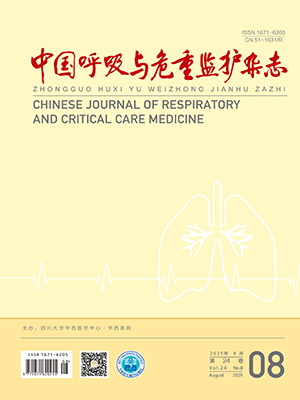Objective To investigate the therapeutic effects of tiotropium in the treatment of stable COPD ( chronic obstructive pulmonary disease) patients of group D.
Methods Sixty-two subjects with stable COPD in group D classified by combined COPD assessment in GOLD 2011, were randomly divided into a treatment group ( n = 32) and a control group ( n = 30) . The treatment group was treated with tiotropium ( 18 μg, inhalation, once daily) plus salmeterol /fluticasone ( 50/500 μg, inhalation, twice a day)and the control group was treated only with salmeterol / fluticasone ( 50/500 μg, inhalation, twice a day) . The exercise tolerance, dyspnea score and lung function were measured before and 1, 8,24, and 48 weeks after the treatment respectively.
Results 8, 24, 48 weeks after the treatment respectively, there were improvements of 6 minute walk test and the dyspnea score of medical research council scale( MRC) in both groups than before treatment, and which was better in the treatment group. Compared with baseline and the control group, significantly greater improvements in the FVC, FEV1 and FEV1% pred were seen in the treatment group at all time points. In the control group, FVC, FEV1 and FEV1% pred 1 and 8 weeks after treatment were higher than those before treatment, but there was no significant difference after treatment of 24 and 48 weeks.
Conclusion Combination treatment with tiotropium and salmeterol / fluticasone inhalation results in greater therapeutic benefits than salmeterol / fluticasone inhalation alone in stable COPD patients of group D.
Citation: XIAO Yongying,SONG Yong,WU Hongming,YANG Fenbing,SHI Yi. Therapeutic Effects of Tiotropium in Treatment of Stable COPD Patients of Group D. Chinese Journal of Respiratory and Critical Care Medicine, 2012, 11(2): 125-128. doi: Copy
Copyright © the editorial department of Chinese Journal of Respiratory and Critical Care Medicine of West China Medical Publisher. All rights reserved




